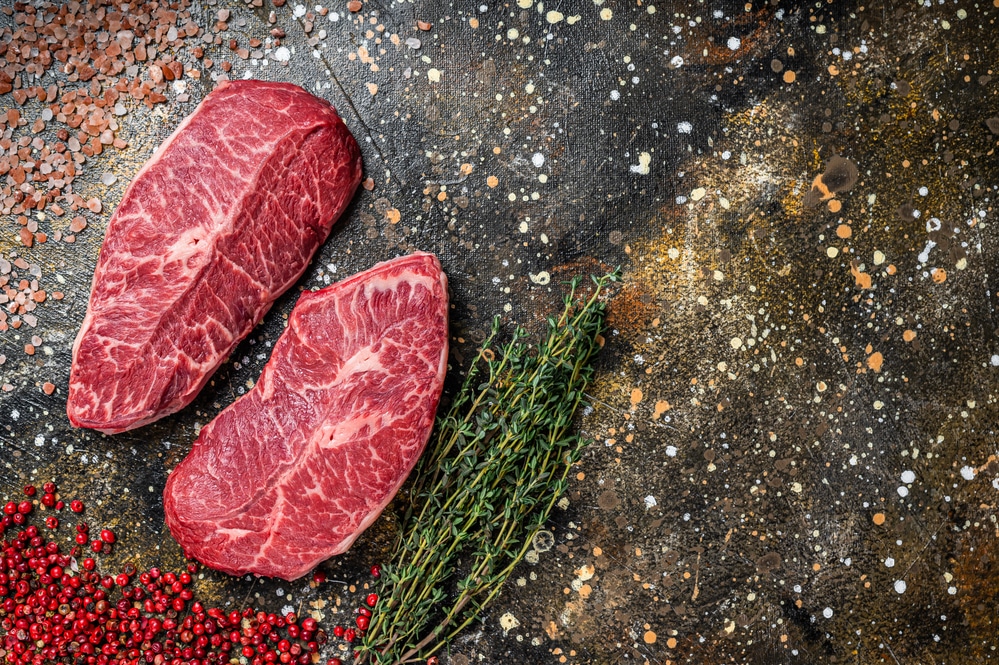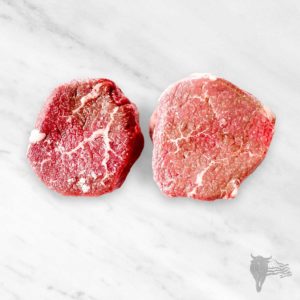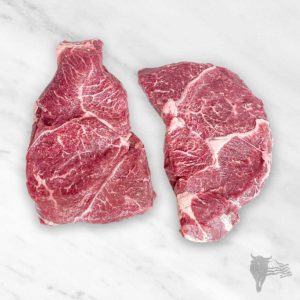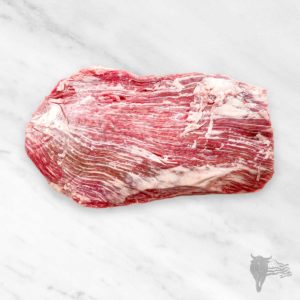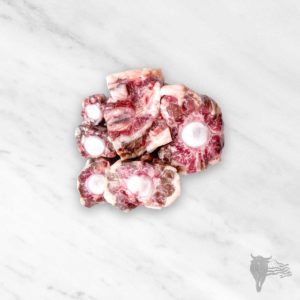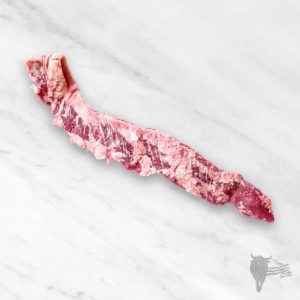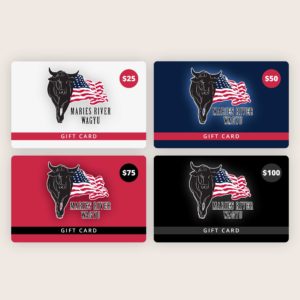Wagyu is Japanese meat of exceptional quality produced by indigenous Japanese cattle breeds such as the Japanese Black. Many of these cattle are raised under rigorous supervision and have never left Japan’s borders, many isolated specific locations.
Historically, the term “Wagyu” refers to all Japanese beef cattle, with “Wa” stands for Japan and “gyu” stands for the cow. The many names for Wagyu allude to the origin of the cattle, such as Kobe, Kagoshima, Matsusaka, and Ohmi.
Wagyu beef has developed a strong following among restaurateurs, chefs, and consumers. Due to its distinctive taste, texture, and marbling, this highly sought-after beef has grown globally. It is heavily marbled and consequently sought after for its flavour.
History of Japanese Wagyu
Wagyu beef originated in Japan and has a long and illustrious history there. In the past, the term “Wagyu” refers to all Japanese beef cattle. Each kind of Wagyu is descended from one of four Japanese cattle breeds:
- Japanese Black (Kurogewashu),
- Japanese Brown (Akagewashu),
- Japanese Polled (Nihon Tankakushu), and
- Japanese Shorthorn (Mukaku Washu).
Outside of Japan, no Japanese Polled or Shorthorns are bred.
There is evidence that genetic differentiation into the Wagyu genetic strain occurred as recently as 35000 years ago. The modern Wagyu cattle are the outcome of crossbreeding between indigenous Japanese cattle and foreign breeds. The crossing started in 1868, after Japan’s Meiji restoration. The administration desired to instill Western culinary habits and culture in the population. In 1910, these British, European, and Asian breeds’ infusions were blocked by external genetic infusions.
In Japan, Wagyu beef production is strictly controlled, including obligatory progeny testing. Only the most well-established genotypes are retained for breeding. Recognizing the importance of this one-of-a-kind product, the Japanese government outlawed Wagyu exports and designated them a living national treasure.
History of American Wagyu
Historically, Japan forbade the export of these cattle; but, between 1975 and 1997, they permitted a limited quantity to be exported. It was when American cattle producers began importing Japanese cattle, mostly Japanese Black variety. These cattle have the most significant impact on the herds in the United States and some other nations.
The majority of US beef output was sold to Japan until 2003. Japan and other nations ceased beef imports to the United States. However, chefs and others in the United States were aware of Wagyu’s higher eating quality and domestic market at the time and today consume a large portion of the domestic supply.
Rather than that, most Wagyu beef served in American restaurants and gourmet stores is a crossbred kind that lacks many of the excellent characteristics of pure Japanese Wagyu.
American Wagyu Versus Japanese Wagyu
Crossbreeding and Feeding
American Wagyu beef is made by crossbreeding cattle, often a full-blood Wagyu with an Angus; the result is a soft, textural, and flavorful product. The Americans crossed some of their breeds with certain high-quality Japanese breeds, resulting in beef with a taste profile that differs from Japan’s.
Additionally, the Japanese are pretty thorough in their cattle grading and trace most of them from the day they are born until they become someone’s meal. They even give certification for genuine Wagyu.
American Wagyu cattle get 400+ days of feed, whereas Japanese Wagyu cattle get 650+ days of feed. Although the Japanese Wagyu diet is highly guarded, it contains barley, wheat bran, rice bran, maize, and other high-quality feeds. Alternatively, the American Wagyu diet is mainly composed of maize and wheat, depending on their proximity to a crop supply.
Cattle Raising Techniques
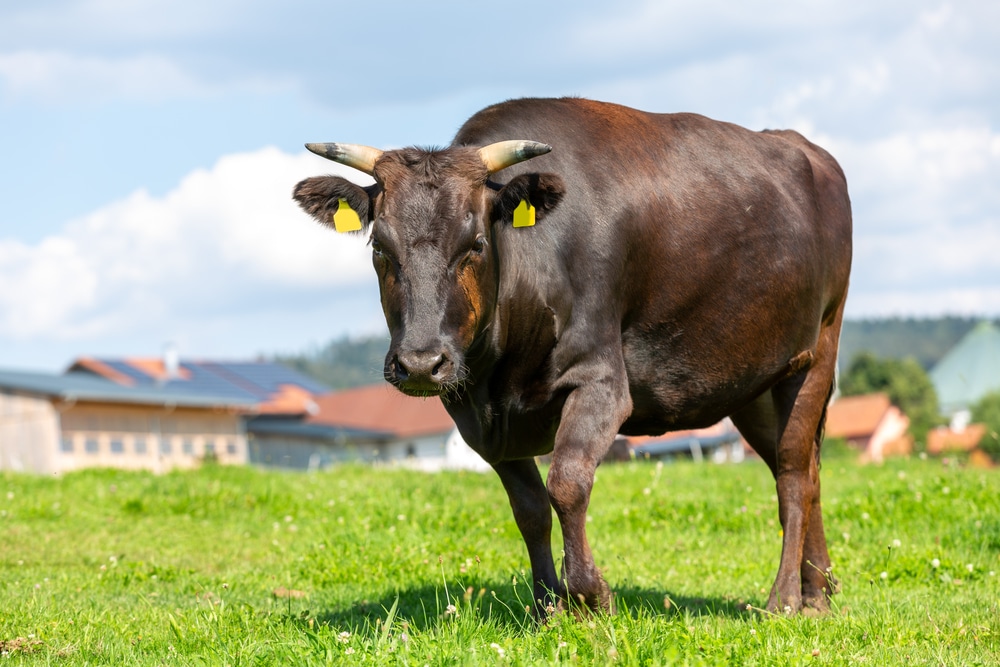
Premium Wagyu beef begins with the animals and their raising methods. Specific cow growing procedures are necessary to produce the best grade Wagyu beef in Japan. Living circumstances and care are critical for maintaining the highest possible meat quality. That is why Japanese farms take great care to ensure their cattle’s health and comfort. It includes ensuring that the cattle:
- Experience relatively little stress;
- Consume high-quality wheat, rice plants, and hay; and
- Live in clean places with access to open space.
While some of these requirements may be satisfied on American farms, they will not be as severely enforced as Japan. Even minor variations in the quality of life may have a noticeable effect on the quality of Wagyu beef.
Wagyu Grading Standards
A significant distinction between Japanese and American Wagyu is the grading criteria that regulate how cattle must be reared and the quality necessary for real Wagyu meat.
The Japanese Meat Grading Association imposes very high requirements on overall meat quality and output in Japan. The quality of Wagyu is influenced by a variety of factors, including colour, texture, marbling, hardness, and fat. Wagyu beef is graded according to a letter (A-C) and number (1-5), with A4 and A5 being the highest possible grades.
In 1990, the American Wagyu Association was founded to ensure that Wagyu beef produced in the United States adhered to the exacting criteria established by the Japanese Meat Grading Association.
Flavour, Texture, and Quality
Authentic Japanese Wagyu is renowned for its excellent taste and tenderness, great melting texture, and dense marbling—all of which are unmatched by American Wagyu. Japanese Wagyu is simply unsurpassed in terms of quality, owing to the high level of cow rearing and stringent grading regulations.
American Wagyu is often grilled, roasted, or pan-seared. Due to less marbling, the fat level is often lower than Japanese Wagyu. It results in a substantial, meaty taste that many find quite palatable when used in well-known meals.
Japanese Wagyu delivers a whole new sensation. Its soft, rich taste coats your lips making it ideal for shabu-shabu, yakiniku, and stir fry. The flavour is often rich and buttery, producing a wonderful eating experience.
Although the flavour and texture of American and Japanese Wagyu vary substantially, both will enhance everyday meals to create memorable dining experiences for your friends and family.
What is Better?
In choosing what is better between the two, there is no fixed answer since both Wagyu can give you a fantastic food experience. Indeed, Wagyu is a quality beef perfect for any food preparation, either main and side dishes and even snacks.
It is always best to try both American Wagyu and Japanese Wagyu. Make yourself the judge in finding out the best Wagyu that fits your taste preference. Always bear in mind that you deserve what is best for you.
Maries River Wagyu is here to provide you with the best Wagyu in town. Contact us today to check on our available Wagyu and our beef recipes perfect for you and your family.
